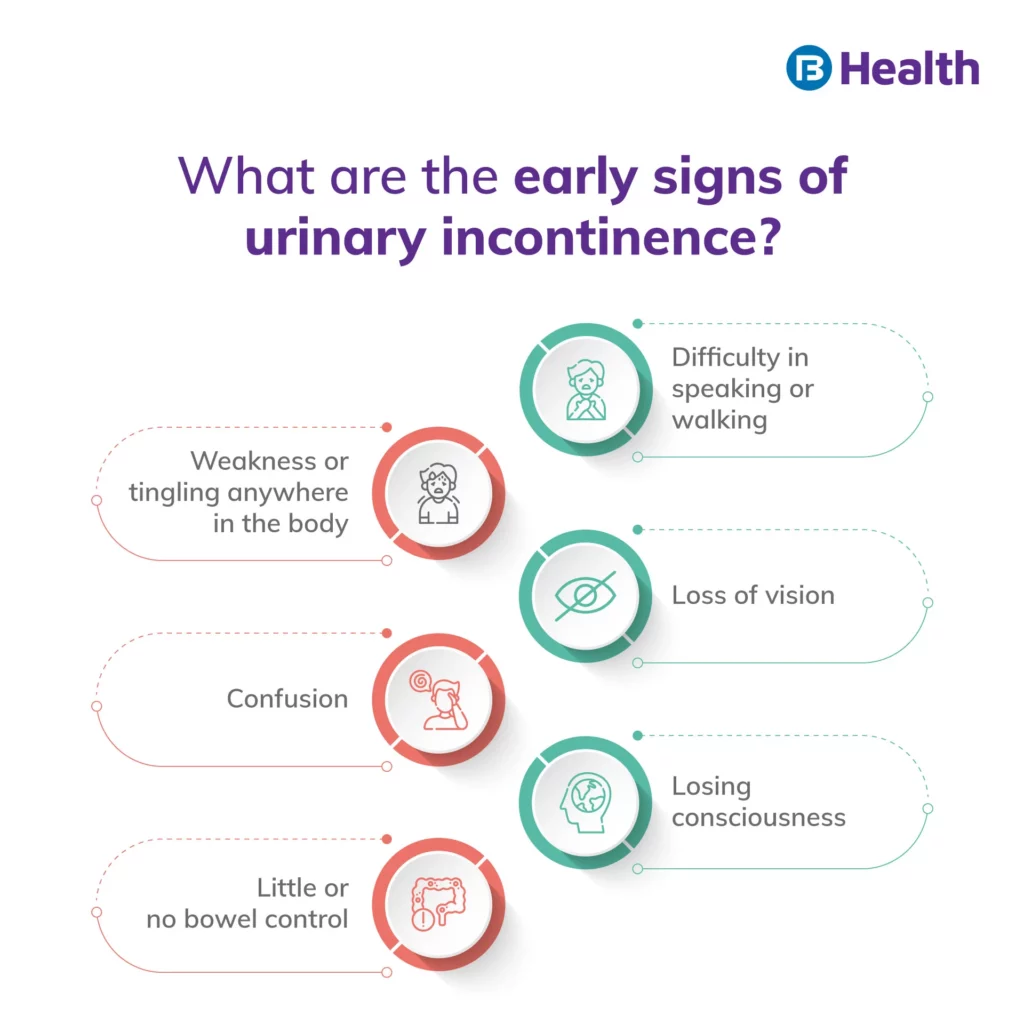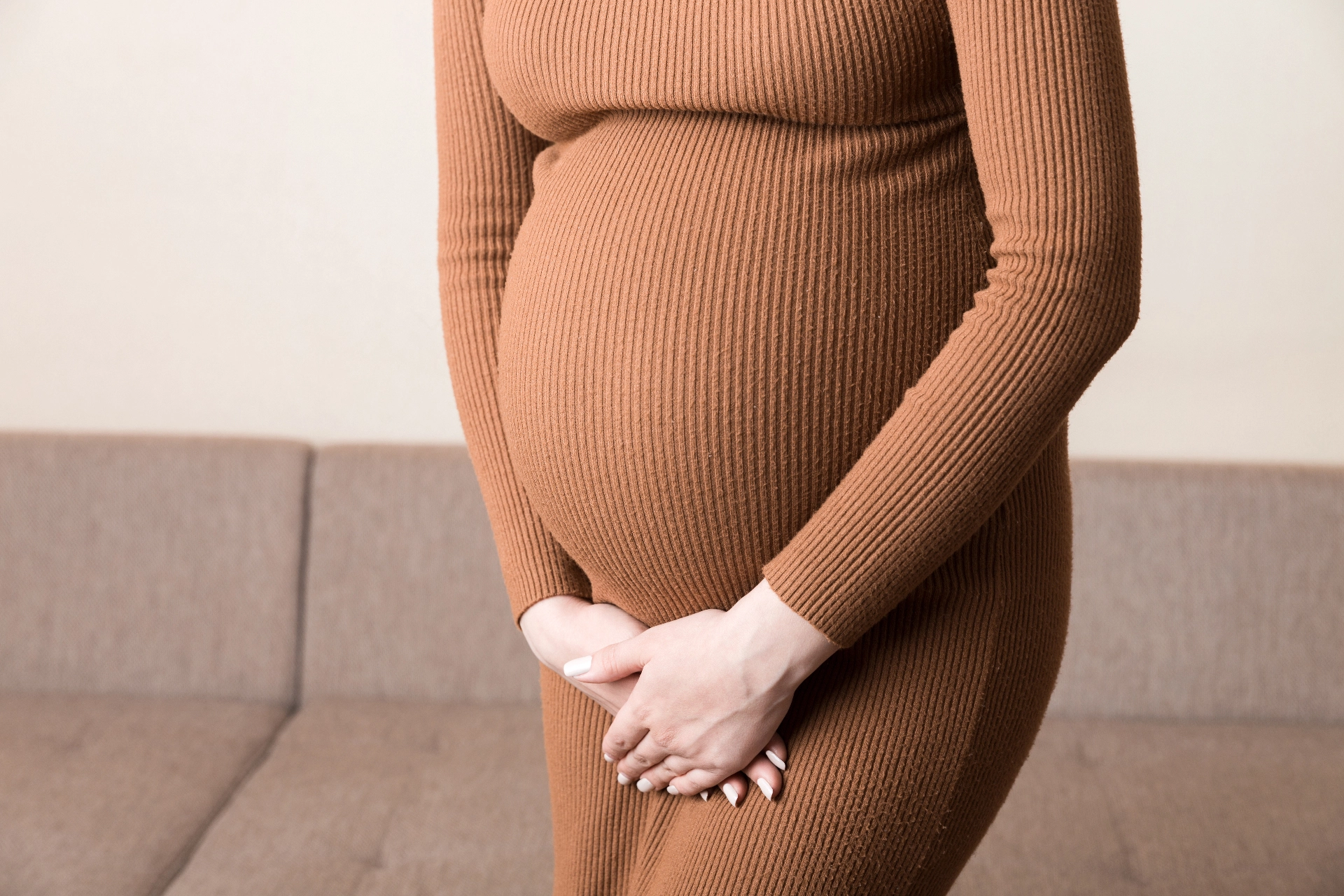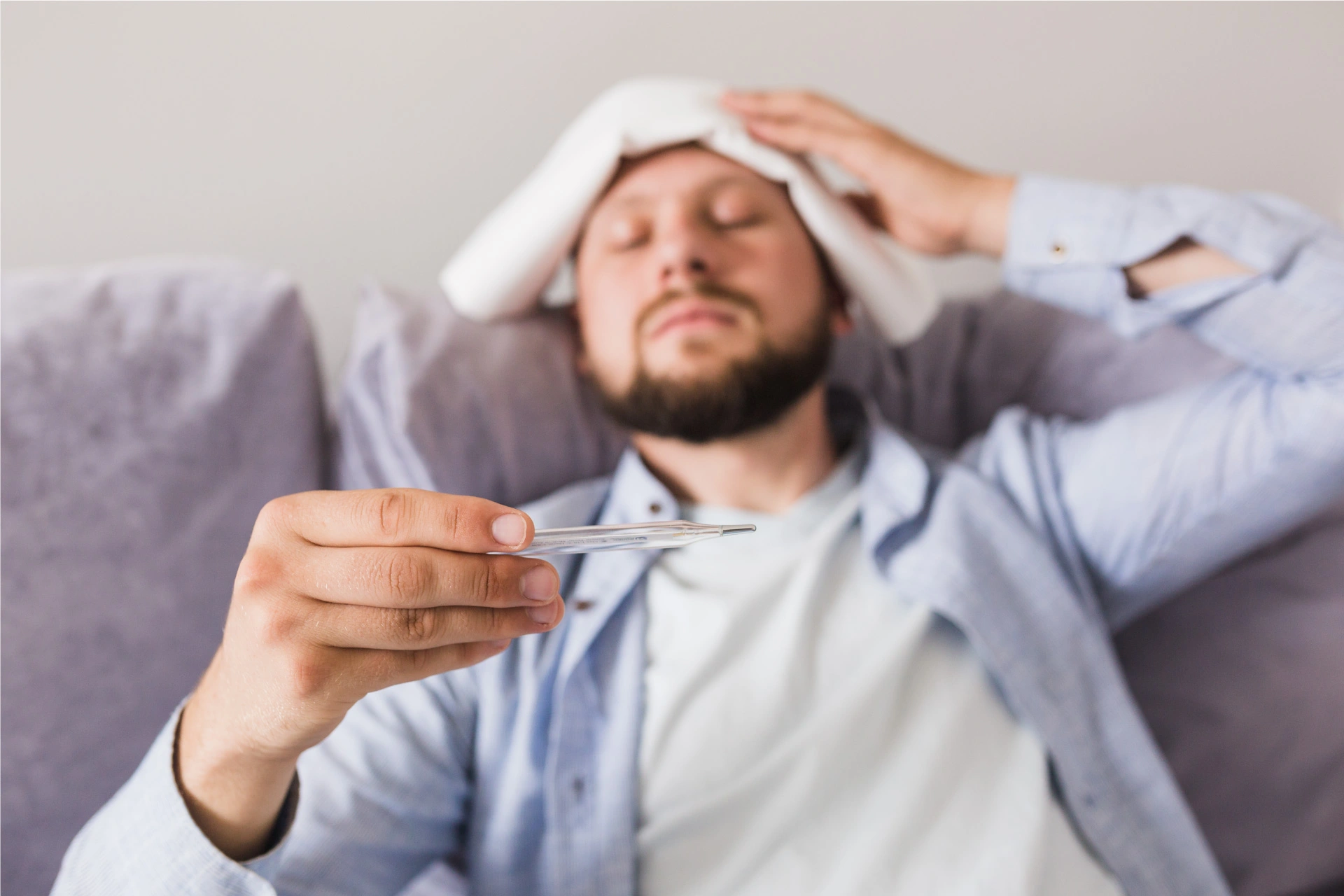General Health | 8 min read
What is Urinary Incontinence: Types, Risk Factor & Diagnosed
Medically reviewed by
Table of Content
Synopsis
Urinary incontinence is a medical condition where a person can't hold urine. It can lead to urine leakage or draining of the bladder entirely. There are different treatment methods based on the cause and type.
Key Takeaways
- Urinary Incontinence: Symptoms, Causes, Diagnosis and Treatment
- Constipation can make your bladder control worse
- Exercise can strengthen your pelvic floor muscle and protect your bladder
Urinary incontinence, or the inability to control one's bladder, is a prevalent and often embarrassing condition. The intensity ranges from sometimes leaking pee when you sneeze or cough to having a sudden and urgent urge to urinate that prevents you from reaching a toilet often.
This condition is not a normal component of aging. Don't wait to see a doctor if your daily activities are hampered by urinary incontinence. Most people can address their urinary incontinence symptoms with simple lifestyle and diet changes or medical attention.
What Are the Causes of Urinary Incontinence?
The types of incontinence and urinary incontinence causes are closely related.
Stress Incontinence
These are the factors that cause stress incontinence:
- Childbirth and pregnancy
- Menopause, as a decrease in estrogen, can weaken the muscles
- Hysterectomy and other surgical procedures
- Age
- Obesity
Urge Incontinence
The following factors have been linked to urge incontinence:
- A bladder lining infection is known as cystitis
- Neurological disorders like multiple sclerosis (MS), stroke, and Parkinson's disease
- Enlarged prostate, which may induce the bladder to drop and the urethra to get irritated
Overflow Incontinence
This occurs whenever the bladder is blocked or obstructed. Possible obstructions include the following:
- A prostate gland enlargement
- The bladder being pressed by a tumour
- Urinary stones
- Constipation
- Urinary incontinence surgery that went too far
Total Incontinence
This can be caused by the following:
- An anatomical defect that exists from birth
- Damage to the spinal cord that alters the nerve impulses between the bladder and the brain
- A fistula occurs when a tube or channel forms between the bladder and an adjacent region, typically the vagina
Other Factors
They consist of the following:
- Several medicines, particularly a few diuretics, antihypertensive, sedatives, muscle relaxants, and sleeping pills
- Alcohol
- UTI or Urinary Tract Infection

What Are the Early Signs of Urinary Incontinence?
Any incidence of incontinence warrants a trip to the doctor. It can cause a lot of disruption in your life, even if the root reason is not serious. Therefore, having a proper diagnosis and going through your treatment choices with a medical expert is important.
Incontinence may occasionally signal a serious medical condition. If you lose control of the bladder and have any of the symptoms listed, you should seek emergency medical attention:
- Speaking or walking difficulties
- Tingling or weakness in any region of your body
- Vision loss
- Confusion
- Loss of consciousness
- Decreased or no bowel control
What Are the Symptoms of Urinary Incontinence?
One of the main urinary incontinence symptoms is unintended urine leaking. The type of urinary incontinence will determine how and when this happens.
Stress Incontinence
This is a more common Urinary Incontinence in Females. The majority of women who have given birth or have had menopause experience this type of urinary incontinence.
Rather than mental stress, physical stress could trigger this type. For example, the person might unintentionally urinate if the muscles and bladder involved in urine control are subjected to abrupt additional pressure.
Urge Incontinence
Often referred to as "overactive bladder," this is the second most prevalent kind of urinary incontinence. An uncontrollable urge to urinate is brought on by a quick, spontaneous contraction of the bladder's muscular wall. When the need to urinate hits, the person has only a few seconds before the pee is expelled, no matter what they do.
Overflow Incontinence
Men with prostate gland issues, damaged bladders, or obstructed urethras are more likely to experience this. For example, the bladder might get blocked by an enlarged prostate gland. However, small quantities of urinary leakage occur when the bladder cannot store as much pee as the body produces or when the bladder cannot drain entirely.
Patients will frequently need to urinate, and they might experience "dribbling" or continual urine leakage from the urethra.
Mixed Incontinence
Both urge incontinence and stress incontinence symptoms will appear in this case. However, physical stress and the urge to urinate are the most significant ones.
Functional Incontinence
When a person has functional incontinence, they know that they need to urinate but cannot get to the restroom in time because of a mobility issue. [1] Elderly persons are more likely to have functional incontinence.
Total Incontinence
This indicates that the person either leaks urine continuously or has uncontrollable leaking of huge amounts of urine periodically.
The person could suffer from a congenital condition (born with a defect), a urinary system or spinal cord injury, or a fistula between the bladder and, for instance, the vagina.
Additional Read: Bladder CancerWhat Are the Treatments for Urinary Incontinence?
The urinary incontinence treatment method will change depending on what's causing your incontinence. Medication, surgery, or further treatments can be necessary to treat an underlying medical issue.
They might not be able to treat your bladder incontinence in some circumstances. In these circumstances, they will offer suggestions on how to manage the condition.
Urinary incontinence may be treated in a variety of ways, as mentioned below:
Bladder training:
You might be urged to perform specific exercises that can improve your bladder control, like pelvic floor workouts or bladder training
Behavioral medicine:
Depending on the cause, controlling your fluid intake, changing your diet, or going to the bathroom at set times before you feel the need to go may help you manage bladder incontinence
Condition management:
Treating the underlying problem that is causing your urine incontinence, like constipation or a UTI, may also alleviate your incontinence
Medication:
Depending on the reason for your bladder incontinence, medication may occasionally be helpful. A class of medications called antimuscarinics is used to address an overactive bladder
Catheter placement:
A doctor might advise an external or internal catheter to handle overflow incontinence better or, in some situations, functional incontinence if it is severe and adversely impacts your quality of life
Weight loss:
Weight loss may be recommended by your doctor for managing your symptoms since it might ease pressure on the bladder
Absorbent undergarments:
Smaller leaks may be contained by using pads or absorbent underwear, such as washable and reusable underwear or disposable panties
Lowering bathroom barriers:
Consider keeping a direct and well-lit path to the restroom if you're having difficulties finding it, especially at night. This will help you reach there as quickly as you can
How is Urinary Incontinence Diagnosed?
Urinary incontinencecan be diagnosed in several ways, including:
- A bladder diary: Through this, the person keeps track of how much they drink when they urinate, how much urine they discharge, and the number of incidents of incontinence
- Physical examination: The doctor may check the vagina and gauge the pelvic floor muscles' strength. A male patient's rectum may be examined to check for enlargement of the prostate gland
- Urinalysis: Tests are done to look for abnormalities and indications of infection
- Blood test: A blood test can be asked by the doctor to evaluate kidney function
- Postvoid residual (PVR) measurement: This determines how much urine is still in the bladder after urinating
- Pelvic ultrasound: Offers an image and could be used to find any abnormalities
- Stress test: The patient is required to exert rapid pressure while the doctor checks for urine loss
- Urodynamic testing: It reveals the amount of pressure that the bladder and urine sphincter muscle can sustain
- Cystogram: A bladder image is produced by an X-ray process [2]
- Cystoscopy: The urethra is examined with a little tube that has a lens at one end. The doctor can examine the urinary tract for any abnormalities

What Are the Complications Related to Urinary Incontinence?
The inability to hold pee can occasionally cause discomfort, embarrassment, and other physical issues.
The urinary in continence complications consist of the following:
Skin issues:
Because their skin is frequently moist or damp, people with urinary incontinence are more susceptible to developing rashes, skin sores, and infections. This is detrimental to wound healing and encourages fungal infections
Urinary tract infections:
Long-term usage of a urinary catheter raises the chance of infection significantly
Prolapse:
A portion of the bladder, vagina, or sometimes the urethra, falls into the vaginal opening. This is usually the result of weak pelvic floor muscles
Those who are embarrassed may withdraw socially, which might result in depression. Anyone who is worried about urine incontinence should consult a doctor.
Are There Any Risk Factors Associated With Urinary Incontinence?
The following are the risk factors associated with urinary incontinence:- Obesity: This increases strain on the muscles surrounding the bladder, which weakens the muscles and increases the likelihood of leaking when the person coughs or sneezes
- Smoking: This can cause a chronic cough that can occasionally cause an incontinence episode
- Gender: Women, especially those who have had children, are more likely than men to experience stress incontinence
- Age: As people get older, their bladder and urethra muscles weaken
- Diseases: Certain conditions and diseases, such as kidney disease, diabetes, spinal cord damage, and neurologic diseases like stroke, enhance the risk
- Prostate disease: Incontinence might appear after radiation treatment or prostate surgery
What Are the Types of Urinary Incontinence?
Usually, the urinary incontinence type and cause are related to each other. They consist of the following:
- Stress incontinence: Coughing, laughing, or performing an action like running or jumping cause urine to leak
- Urge incontinence: Urine leaks concurrently with or shortly after a sudden, strong need to urinate
- Overflow incontinence: The failure to completely empty the bladder can cause leaks
- Complete incontinence: It occurs when the bladder is unable to store urine
- Functional incontinence: Urine leaks when a person, possibly because of a mobility issue, is unable to get to the restroom in time
- Mixed incontinence: It is a combination of stress incontinence and urges incontinence
References
- https://www.sciencedirect.com/topics/medicine-and-dentistry/functional-incontinence
- https://www.hopkinsmedicine.org/health/treatment-tests-and-therapies/cystography#:~:text=Cystography%20is%20an%20imaging%20test,contrast%20dye%20into%20your%20bladder.
Disclaimer
Please note that this article is solely meant for informational purposes and Bajaj Finserv Health Limited (“BFHL”) does not shoulder any responsibility of the views/advice/information expressed/given by the writer/reviewer/originator. This article should not be considered as a substitute for any medical advice, diagnosis or treatment. Always consult with your trusted physician/qualified healthcare professional to evaluate your medical condition. The above article has been reviewed by a qualified doctor and BFHL is not responsible for any damages for any information or services provided by any third party.





